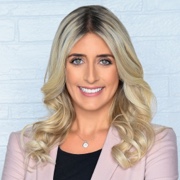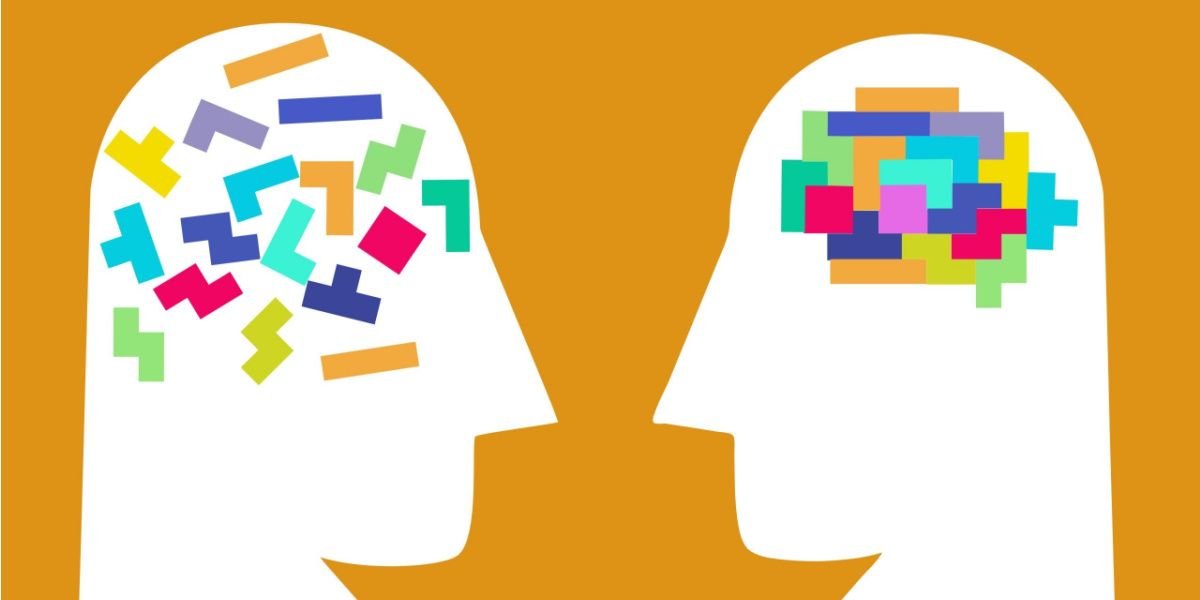Neurodevelopmental disorders are a group of conditions that typically present early in early development, which means as a toddler, child, or adolescent. They influence how the brain functions and impact normal neurological development. These deficits can cause impairments in personal, social, or academic functioning.
These disorders encompass a range of developmental issues, including those affecting attention, memory, perception, language, problem-solving, and social interaction. The most common neurodevelopmental disorders are attention deficit hyperactivity disorder, intellectual disability, and autism spectrum disorder, although there are many more that fall under this category. [1][2][3]
Below, we’ll discuss the various types of neurodevelopmental disorders, how to get diagnosed, and potential treatment options. Because these disorders can persist into adulthood and often go undiagnosed for many years, raising awareness of these disorders is key to leading to earlier intervention and potentially better outcomes for those affected. [3]
- Neurodevelopmental disorders typically begin in early childhood and can affect behavior, learning, communication, and motor skills throughout a person's life.
- These disorders often have genetic and environmental causes, and early diagnosis, especially in childhood, can lead to more effective interventions and improved outcomes.
- While there is no cure, a multidisciplinary treatment approach involving therapy, educational support, and sometimes medication can significantly enhance daily functioning and quality of life.

Understanding neurodevelopmental disorders
Neurodevelopmental disorders are caused by atypical brain development and functioning. They typically result from genetic mutations, environmental exposures, or complications during birth. According to research, prenatal exposure to alcohol, lead, or infections has been shown to alter neural development and increase the risk of disorders such as autism spectrum disorder (ASD) and attention-deficit/hyperactivity disorder (ADHD). [4][5][6]
Affected individuals usually display signs and symptoms such as difficulties with attention, communication, memory, motor coordination, and social interaction. These disorders typically emerge during infancy or childhood and affect daily functioning across various domains of life. [7]
Are they genetic?
Many neurodevelopmental disorders have a strong genetic component. Research demonstrates that inherited genetic variants may play a significant role in the development of conditions like ASD and intellectual disability. [8] For instance, mutations in specific genes that influence brain structure or signaling pathways can significantly increase the risk.
According to research, ADHD has an estimated heritability of about 80%, which means if you have a parent or relative with the disease, it is much more likely you’ll develop the condition. [9]
That said, genes alone don't paint the full picture. As explained by the National Institute of Health, neurodevelopmental disorders typically result from a combination of genetic susceptibility and environmental influences, such as maternal stress, toxin exposure, or infections during pregnancy. [2] The interaction between these factors is still an active area of research.
Classifications of neurodevelopmental disorders
Neurodevelopmental disorders are grouped into several primary categories, each defined by unique symptoms and patterns of development. While some individuals may only meet the criteria for one disorder, comorbidity (having more than one diagnosis) is common.
Intellectual Disability (ID)
Intellectual Disability involves significant limitations in both intellectual functioning (such as reasoning, learning, and problem-solving) and adaptive behaviors (such as communication, daily living skills, and social skills). [10][2]
To meet diagnostic criteria, these limitations must appear during the developmental period, typically before age 18. The severity can range from mild (individuals may live independently with support) to profound (requiring intensive, lifelong assistance). According to the American Psychiatric Association (APA), early intervention programs, educational support, and life-skills training are key to helping individuals lead meaningful lives. [10][2]
Communication Disorders
Communication disorders impact how a person receives, understands, or produces language. This group includes:
- Language Disorder: Difficulty using spoken or written language. A child may have a limited vocabulary or struggle to form sentences. [11]
- Speech Sound Disorder: Problems with articulation, making it hard to be understood by others. [12]
- Childhood-Onset Fluency Disorder (Stuttering): Disruptions in the flow of speech, such as repetitions or prolonged sounds. [13]
- Social (Pragmatic) Communication Disorder: Trouble using verbal and nonverbal communication appropriately in social contexts—e.g., difficulty taking turns in conversation or understanding implied meanings. [14]
These conditions often become noticeable when a child starts school or struggles to meet language milestones. Speech and language therapy is the cornerstone of treatment.
Autism Spectrum Disorder (ASD)
ASD is a complex neurodevelopmental condition characterized by:
- Persistent challenges in social communication and interaction
- Restricted, repetitive behaviors or intense focus on specific interests or activities
- Sensory sensitivities (e.g., to noise, textures, or light) [3]
The term “spectrum” reflects the wide variation in symptoms and support needs. Some individuals may be nonverbal and require full-time care, while others are highly verbal and live independently, sometimes with mild support. [15] Early behavioral intervention, occupational therapy, physical therapy, and speech therapy can make a significant difference in outcomes.
ASD frequently co-occurs with other conditions such as sensory processing disorder, ADHD, anxiety, or intellectual disability. [3]
Attention-Deficit/Hyperactivity Disorder (ADHD)
ADHD is one of the most common neurodevelopmental disorders, affecting approximately 5–10% of children and often persisting into adulthood. [16] It’s characterized by:
- Inattention: Difficulty focusing, following through on tasks, or organizing activities.
- Hyperactivity: Excessive movement or fidgeting, especially in inappropriate settings.
- Impulsivity: Hasty actions without forethought can result in risky behaviors or accidents and other difficulties in social settings.
There are three subtypes: predominantly inattentive, predominantly hyperactive-impulsive, and combined. Common treatments include stimulant medications, behavioral therapy, and accommodations at school or work. [1][16]
Specific Learning Disorders
These disorders affect the ability to acquire academic skills despite normal intelligence and educational opportunities. Common types include:
- Dyslexia: Difficulty reading, decoding words, and spelling.
- Dysgraphia: Challenges with handwriting, spelling, and organizing ideas in writing.
- Dyscalculia: Difficulty with number sense, arithmetic, and mathematical reasoning.
Symptoms typically appear when a child begins school and can persist into adulthood. With early identification, students can receive tailored instruction, assistive technology, and academic accommodations to support their learning needs. [17]
Motor Disorders
Motor disorders involve impairments in coordination or involuntary movements and include: [18]
- Developmental Coordination Disorder (DCD): Sometimes referred to as “dyspraxia,” this affects a child's ability to perform coordinated motor tasks like tying shoes, using scissors, or participating in sports. Children may appear more clumsy or uncoordinated than their peers.
- Stereotypic Movement Disorder: Characterized by repetitive, nonfunctional motor behavior (e.g., hand-flapping, head-banging, rocking), which can interfere with daily functioning or cause self-injury.
- Tic Disorders: These include transient or chronic motor or vocal tics. The most well-known example is Tourette Syndrome, which involves multiple motor tics and at least one vocal tic that persists for over a year. [19]
Occupational and physical therapy can improve motor skills, while behavioral and pharmacological treatments may help manage tics or reduce the risk of injury.
Diagnosing neurodevelopmental disorders
Diagnosis involves a combination of developmental screening, clinical observation, and standardized assessments. Pediatricians, psychologists, psychiatrists, and neurologists often work together to evaluate symptoms, developmental history, family background, and environmental factors.
Tools like the Autism Diagnostic Observation Schedule (ADOS) or Conners’ Rating Scales for ADHD are commonly used, depending on the suspected condition. [1][3] Precise language and categorization are key to accurate diagnosis and individualized support. [20]
Signs you should seek a diagnosis
It’s essential to seek a professional evaluation if you or your child experiences any of the following:
- Delayed milestones (e.g., not speaking by age 2)
- Difficulty making eye contact or understanding social cues
- Trouble focusing or staying still for age-appropriate activities
- Repetitive behaviors or intense fixations
- Difficulty reading, writing, or solving basic math problems
- Poor coordination or clumsiness
Early identification can lead to better outcomes. Providing early developmental support can significantly improve adaptive functioning later in life. [21]
Complications in getting a diagnosis
Many individuals face barriers to receiving timely and accurate diagnoses, including:
- Symptom overlap: For example, both ADHD and ASD can involve attentional and social difficulties. [1][3]
- Underdiagnosis in girls: Research shows that girls often present differently than boys, leading to missed or delayed diagnoses. [22]
- Limited specialist access: Rural areas and underfunded health systems may lack neurodevelopmental specialists.
- Stigma and misunderstanding: Cultural beliefs or family pressure may discourage seeking help.
These complications often delay treatment and can exacerbate social, emotional, or academic challenges.
Getting a diagnosis as an adult
Many adults discover later in life that their longstanding struggles with attention, communication, or social interaction stem from an undiagnosed neurodevelopmental disorder. This may come as a relief, providing context for lifelong difficulties. [23] A 2020 review highlights how improved awareness has led to more adult assessments, especially in ASD and ADHD. [24]
Adults seeking a diagnosis can expect the following:
- Detailed interviews about childhood behavior
- Cognitive and behavioral testing
- Reviews of school records or family reports
- Collaboration with experienced clinicians
While resources for adults can be harder to find, diagnosis can open doors to treatment, accommodations, and community support.
Treatment options for neurodevelopmental disorders
There is no "cure" for neurodevelopmental disorders, but many treatments can improve functioning and quality of life. A multidisciplinary approach (utilizing multiple types of healthcare providers) is typically most effective and may include:
- Behavioral therapy: Techniques like Applied Behavior Analysis (ABA) for ASD or Cognitive Behavioral Therapy (CBT) for ADHD. [1][3]
- Speech and language therapy: A speech pathologist is professionally trained to provide assistance with speech and language skills. They can help improve communication skills. [3]
- Occupational therapy: Occupational therapists may work with individuals with neurodevelopmental disorders to focus on improving motor coordination, sensory integration, coping strategies, and self-care skills.
- Medications: Working with a psychiatrist or pediatrician is crucial for effective management of neurodevelopmental disorders. Specific medications, such as stimulants for ADHD, SSRIs for anxiety, or antipsychotics for severe behavioral issues, have been shown to improve symptoms for some patients. The American Psychiatric Association outlines standard medication options for children with ADHD, ASD, and other neurodevelopmental disorders. [25]
- Educational support: Individualized Education Plans (IEPs) or 504 plans in schools help tailor learning strategies. [1][2][3]
Living with neurodevelopmental disorders
Living with a neurodevelopmental disorder often involves learning to navigate a world not built for your brain. But with self-awareness, proper tools, and support, individuals can thrive in school, work, and relationships.
Strategies include:
- Embracing neurodiversity: Recognizing that different ways of thinking are not deficits but variations.
- Building a routine: Structure helps manage attention, anxiety, and sensory overload.
- Accessing support groups: Peer communities provide validation, shared experience, and practical advice.
- Seeking accommodations: Reasonable adjustments can make a huge difference in performance and well-being at work or school.
Ongoing research and advocacy are helping to improve outcomes, reduce stigma, and empower individuals with neurodevelopmental disorders to live full and meaningful lives. [26]


-guide-detail.jpg?v=1743497813)
